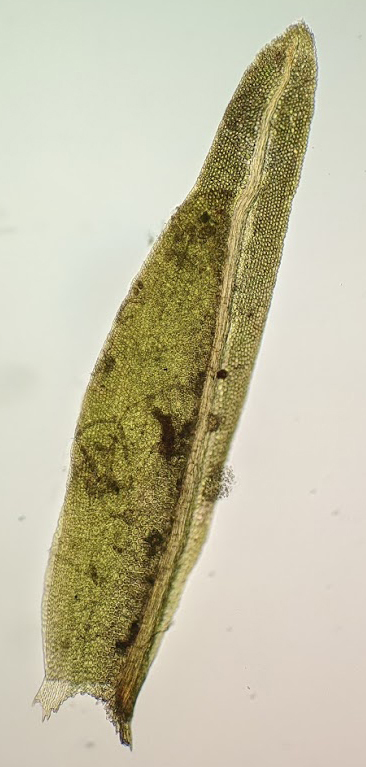Fissidens asplenioides
Hedw.Asexual reproduction occasionally by rhizoidal tubers. Turfs on soil or rocks, occasionally in water, yellow-green to dark green. Stems 5–30 mm long, occasionally branched, orange to light brown, central strand strong, with rhizoids at branch bases. Leaves oblong-lingulate, strongly coiled at the apex when dry, 2–4 mm long, 0.3–0.7 mm wide, flat; costa ending 5–12 cells below apex; apex obtuse to rounded. Dorsal laminae with serrulate margins, irregularly so near apex, the several marginal rows thicker-walled, forming a paler border; cells way from margins ±isodiametric, irregularly rounded-hexagonal, 5–15 μm long and wide, mammillose, uniform throughout length. Vaginant laminae c. 3/4 leaf length, open or nearly so, margins crenulated to weakly serrulate, with several marginal rows of thicker-walled cells forming a paler border. Dioicous. Seta 3–5 mm long, yellow to orange-brown. Capsule oblong, inclined, curved; theca 1–1.5 mm long. Calyptra smooth, cucullate. Operculum obliquely rostrate from a conic base, 1–1.5 mm long. Peristome teeth bifid.
GleP, VVP, VRiv, GipP, OtP, Gold, CVU, GGr, DunT, EGL, EGU, WPro, HSF, HNF, OtR, Strz, MonT, HFE, VAlp. Widespread along and south of the Great Dividing Range in sclerophyll forest usually close to streams. Also WA, SA, QLD, NSW, ACT and Tas. New Zealand and widespread throughout tropical and subtropical regions of the world.
 Spinning
Spinning


